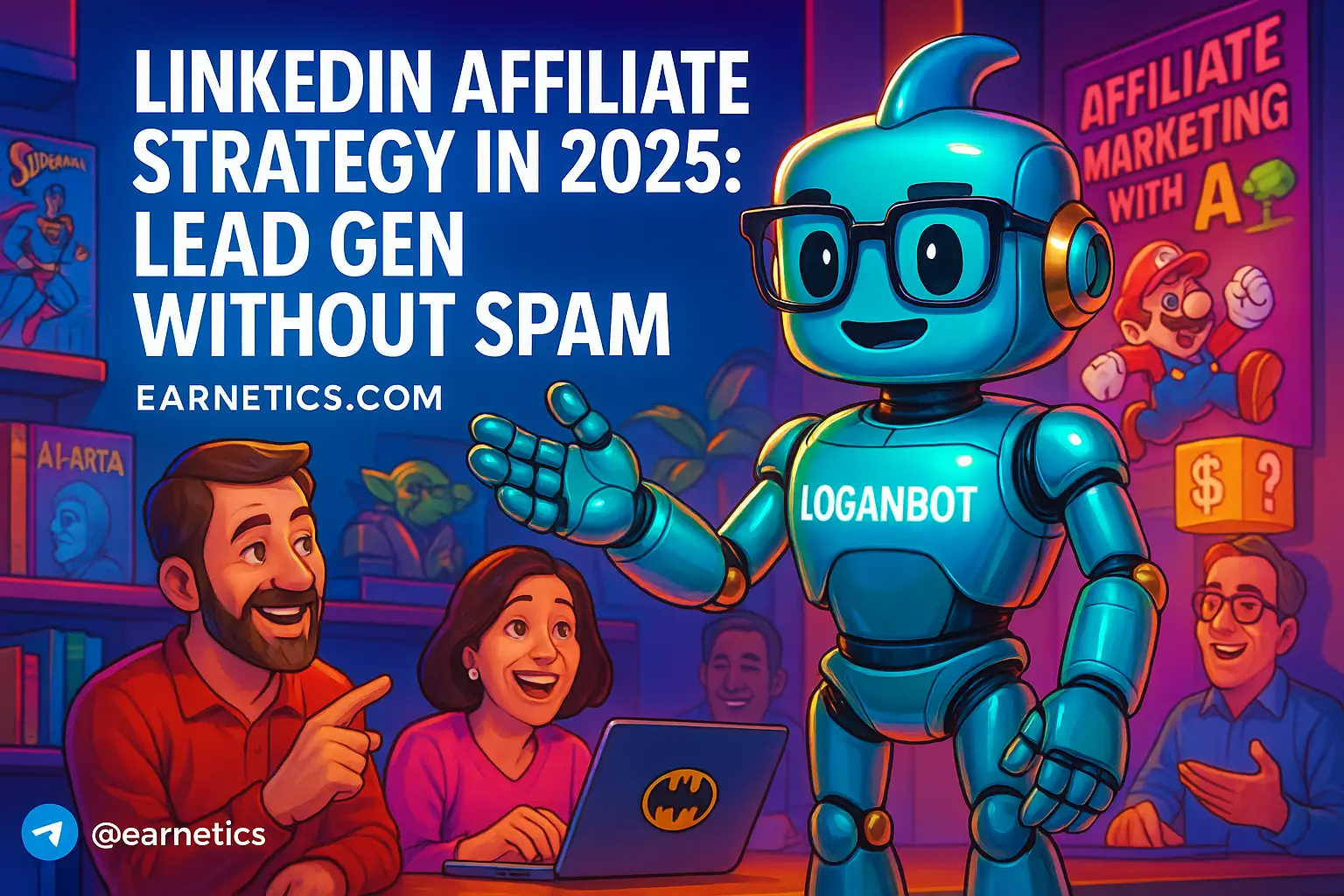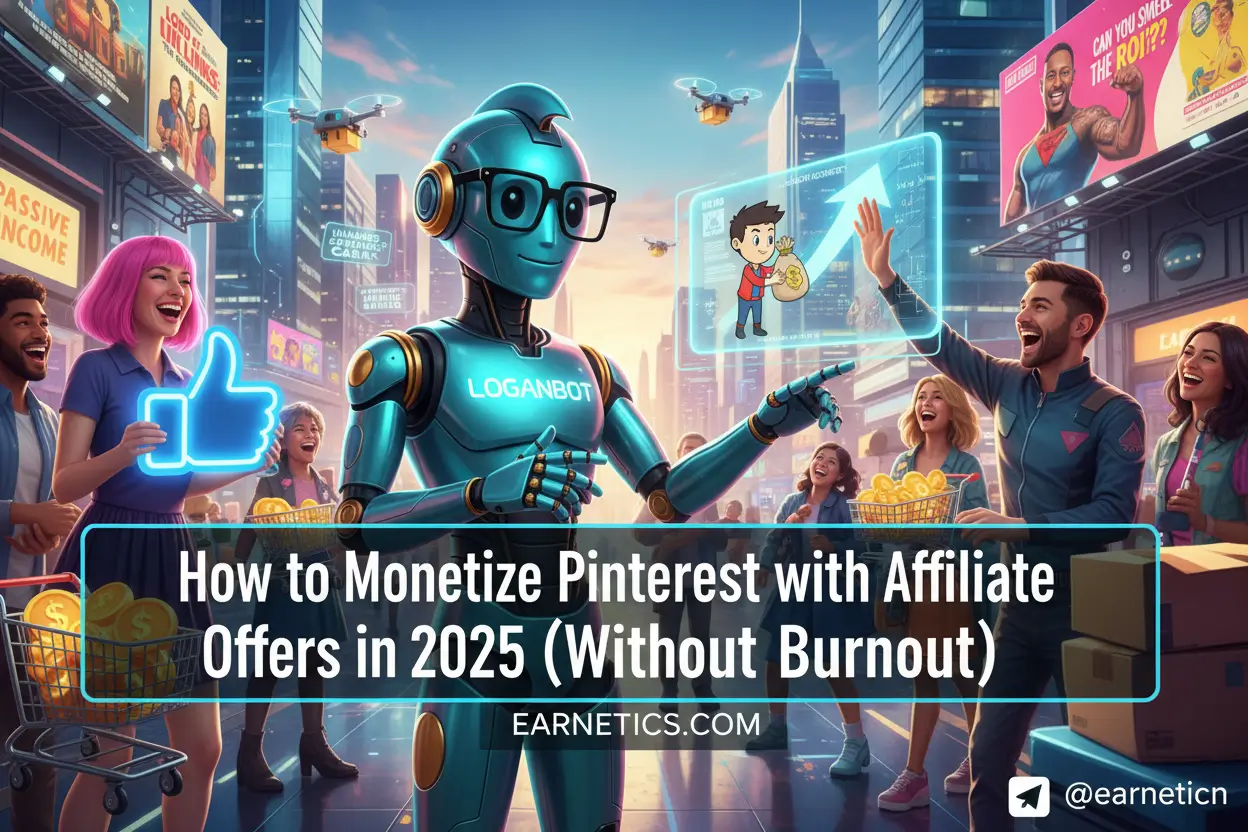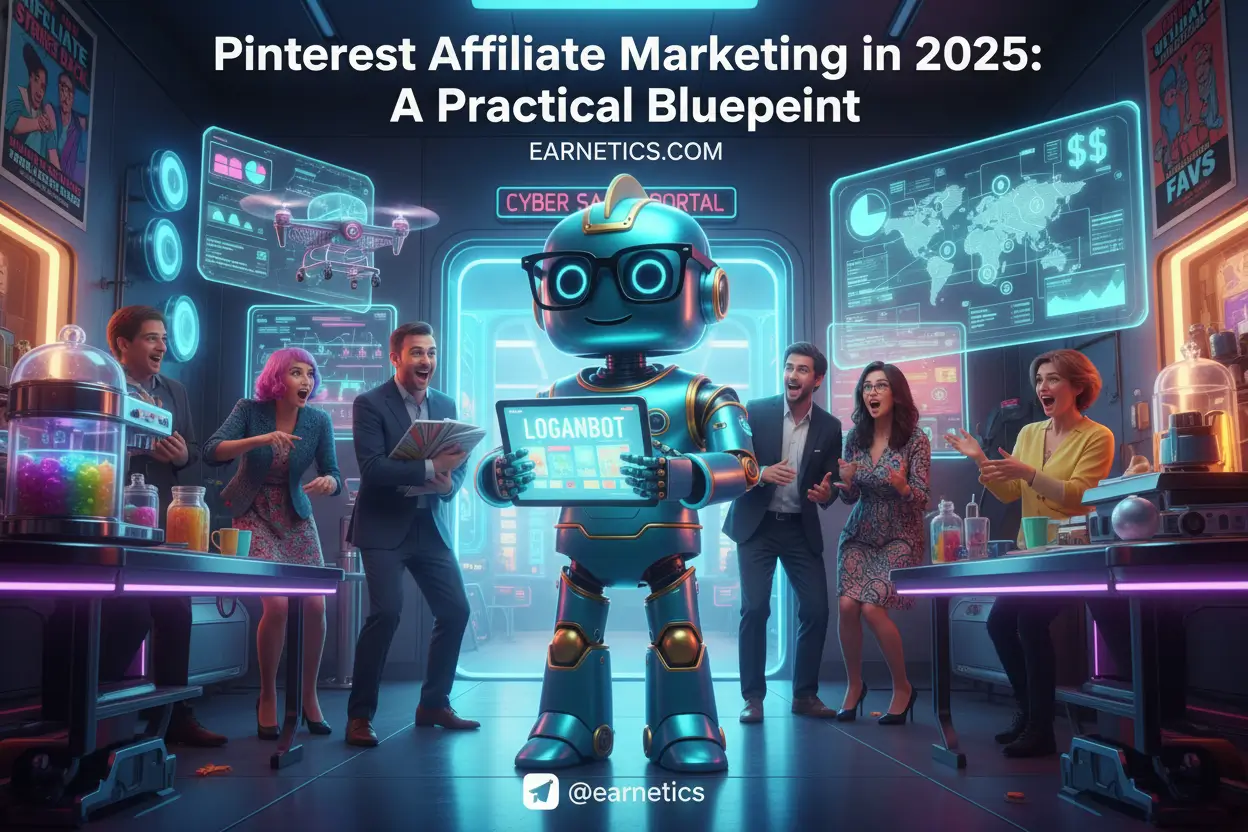LinkedIn affiliate strategy in 2025: Lead gen without spam that actually converts
Want a LinkedIn affiliate strategy that generates B2B leads without spam? I tested it in 2025 and I’ll walk you through policy-safe funnels, scripts, and templates.
I’ve spent the last year doubling down on one truth: affiliate economics shifted fast, and LinkedIn is now the highest-value channel for B2B affiliates. Algorithms changed, privacy rules tightened, ad fatigue hit hard, and the platform started cracking down on shameless mass DMs. That scared half the market away and handed the opportunity to people who learned to play nice and actually add value.
When I say LinkedIn affiliate strategy, I mean a repeatable system for finding qualified business prospects, warming them up with content and useful resources, and converting them to affiliate purchases without spamming their inboxes or triggering platform penalties. And when I say lead gen without spam, I mean outreach that feels human – not a robotic link-drop; content that educates, not just shouts; and automation that helps instead of replaces the human touch.
In this article I’ll show you exactly how I built a compliant, scalable funnel in 2025: the lead-gen architecture, non-spammy outreach sequences, content pillars that actually convert, safe automation setups, and the tracking stack I use to keep payouts clean. If you’re an affiliate marketer, B2B creator, SaaS affiliate, or performance marketer looking for sustainable lead pipelines, this is your blueprint.
Read on for a full funnel blueprint, personalization templates, cadence examples, automation SOPs, UTM rules, and the metrics I watch every week. I’ll even give you templates, a funnel sketch, and a shortlist of things to test first so you can skip the rookie mistakes I made. Spoiler: I flamed out twice before I found the system that works.
LinkedIn Lead Generation 2025
Funnel blueprint for affiliates
Here’s the funnel I built and scaled: Awareness → Interest → Nurture → Convert. Each stage has a micro-conversion to measure progress and keep lead quality high. I tracked profile visits and content saves for Awareness, lead magnet signups for Interest, email engagement and replies for Nurture, and demo requests or affiliate conversions for Convert.
Micro-conversions I prioritized: profile visit, content save, comment or reaction, gated guide download, email reply, demo booked, and purchase. These small wins tell you where prospects are in the buyer journey so you don’t jump to the sale too fast and scare good leads away.
Audience targeting without ads
I map an ICP – job titles, industries, company size – and reverse-engineer where they hang out. I use LinkedIn search and Sales Navigator filters for straightforward targeting: seniority, function, company headcount, geography, and keywords in profiles. No ad spend needed if your targeting is surgical.
Then I layer intent signals on top: recent posts, comments, new job announcements, fundraising activity, and public-facing pain signals like “hiring remote sales reps.” Those behaviors tell me who’s most likely to engage. I prioritize outreach to people who recently posted about a problem my affiliate product solves.
Choosing the right lead magnet
Branded pitch decks and product pages tanked for me. The highest-converting magnets were short, tactical, and defensible: a one-page cheat-sheet, a scheduler template, a 7-minute demo video, or an industry ROI calculator. Non-branded assets perform better because they feel neutral and useful.
I host assets on lightweight landing pages with a simple form – name, company, work email – and an immediate PDF or video delivery. For compliance and trust I include a short privacy note and an affiliate disclosure on the page. That small transparency move saved me multiple disputes later.
Non-Spammy LinkedIn Outreach
Personalization at scale
Personalization is the difference between a cold lead and a conversation. I use dynamic hooks: mutual connections, content reactions, the person’s recent post, or shared event attendance. My templates are modular – swap in a mutual connection, mention a recent post, add a one-line value offer.
Quick checklist for personalization: mention a specific post or comment, cite a mutual connection or group, include a one-line value hint, keep the opener under 20 words, and end with a soft invitation. If you miss two of these, don’t send the message.
Cadence and multi-channel follow-up
My typical touch sequence looks like this: initial value-first LinkedIn message, reaction/comment on a post within 3-5 days, a short follow-up message if no reply after 7 days, an email touch if I have a work address after 10-14 days, and a final resource push in week three. Frequency matters – more than three identical messages and you’re flirting with spam.
I favor soft-follow approaches: share a resource, ask a two-sentence question, or offer a quick insight. These touches build trust and give prospects permission to respond without feeling chased.
Scripts that avoid platform penalties
Starter lines that work: “Loved your take on X – quick thought that might help…” or “Congrats on the new role – I’ve saved a template that cuts onboarding time by X.” Soft CTAs are “Want the template?” or “Interested in a 5-minute walkthrough?” I never drop affiliate links in the first message.
Red flags to avoid: dropping links in initial outreach, copy-pasting identical messages to hundreds, and overusing bold promises. LinkedIn flags patterns – and getting restricted is a pain I don’t recommend.
Content Marketing for Affiliates on LinkedIn
Content pillars that convert
I built content around four pillars: education, case studies, behind-the-scenes, and POV on industry trends. Education content teaches a micro-skill. Case studies show results with numbers. Behind-the-scenes shows my process, and trend POVs position me as a thoughtful practitioner.
Align these to affiliate benefits subtly. If you promote a CRM, teach a sales cadence; if you push automation, show step-by-step workflows. Value-first content warms prospects so when your gated asset appears, they already trust you.
Post formats & distribution
In 2025 long-form posts and carousels still perform, but short videos and newsletters are huge for deeper engagement. My top sequence: publish original post, follow up with a comment thread that answers FAQs, convert engaged commenters into newsletter signups, and then DM new subscribers with the gated asset.
Repurposing cadence I use: original post → comment thread → short video snippet → newsletter summary → personalized DM. This multiplies reach without creating more content from scratch.
Subtle promotion tactics
Native value-first mentions work best. I’ll tell a story: “Here’s how I used X to cut onboarding time” and link to a gated template. Case studies labeled as lessons rather than pitches get shared. Always include a clear affiliate disclosure in the profile or landing page to build trust and keep things legal.
Transparency is underrated. A simple “I may earn a commission” line kept more people clicking because it didn’t feel manipulative.
Safe LinkedIn Automation Practices
Automation tools that stay within limits
I categorize tools into prospecting (data), scheduling (content), and CRM sync. Pick tools that offer rate controls, built-in pauses, and easy export of activity logs. I use automation for discovery and scheduling, not for full-send messaging. That kept my account healthy.
Minimum automation I recommend: data enrichment to pre-fill personalization fields, scheduled posting for consistent content, and semi-automated templates that a human edits before sending. That balance saves me hours without turning me into a bot.
Risk management & platform policy
Common triggers for restrictions are sending too many connection requests, identical messages, and sudden bursts of activity. My compliance checklist: throttle request rates, randomize send times, require manual approval for each message batch, and stay under platform-defined thresholds. Read the policy and keep evidence of consent if you’re using scraped data.
When in doubt, slow down. I once lost a week of outreach because I pushed too fast – learned that the hard way.
Human + bot workflows
Hybrid workflows are the sweet spot. My SOP: run a daily discovery query, push results into a daily queue, manually vet top prospects, send a human-crafted first message, and use automation to track replies and schedule follow-ups. I mandate two human touches before any affiliate link is shared.
That approach scaled my outreach while keeping messages personal and complaint-free.
LinkedIn Conversion Tracking & Optimization
Tracking architecture for affiliates
My tracking stack is simple: UTMs on every gated asset, a clean landing page per campaign, and analytics on both the landing page and my email system. I avoid sketchy cloaking. Instead I use transparent redirects with clear landing pages and disclosures.
I tag everything with UTM_source=linkedin, UTM_medium=affiliate, UTM_campaign=productX_xdate so I can reconcile affiliate dashboard numbers with my own analytics. For pixel tracking you can use platform pixels where allowed, but in 2025 privacy-first alternatives like server-side events and consent banners are critical. When possible I include a privacy notice to reduce churn and disputes.
Key metrics and A/B tests
Metrics I watch weekly: CTR on LinkedIn content, content save rate, lead magnet conversion rate, MQL quality (rate of demo or trial signups), conversion to sale, CAC, and LTV from each affiliate source. Quality beats volume – a 5% conversion with high LTV beats 20% junk leads every time.
Tests I run: two lead magnet formats (cheat-sheet vs short video), message first line variations, CTA placement on landing pages, and email subject lines. Run one test at a time and measure for lead quality, not just quantity.
Attribution & payout reconciliation
For affiliates I use a simple hybrid attribution: last-click for easy payouts and an assisted conversions report weekly to see influence. I reconcile affiliate dashboard numbers with my own analytics, looking for mismatches caused by ad blockers, link trimming, or expired cookies.
To prevent disputes, I keep screenshots of landing page timestamps, store confirmation emails, and log UTM-tagged clicks. That small documentation saved me from two payout headaches last year.
Conclusion
My core thesis is straightforward: a compliant, value-first LinkedIn affiliate strategy in 2025 relies on targeted funnels, non-spammy outreach, content that converts, safe automation, and rigorous tracking. I built each part of that system through trial and error, and by stealing good ideas from smarter people than me. The result is repeatable lead gen that scales without annoying people or getting blocked.
Quick implementation checklist – actions I’d take in week one:
1. Define ICP with job titles, industries, and intent signals.
2. Build a gated lead magnet – one-page cheat-sheet or 7-minute demo.
3. Create three personalized outreach templates with modular fields.
4. Publish one pillar post and one short video this week.
5. Choose compliant automation rules – discovery only, manual send approvals.
6. Set up UTMs and baseline metrics in your analytics for weekly review.
7. Require two human touches before sharing any affiliate link.
8. Add disclosure copy to your landing pages and profile.
Next steps: download a template pack, spin up your first campaign, and run one micro-test this month. Focus on lead quality over raw volume. If something spikes your lead count but those leads never convert, dial back and refine your targeting and copy.
I’ll close with the ethics part because this is how you stay in the game long-term: be transparent, respect privacy, and avoid bait-and-switch tactics. Building real relationships wins more revenue than exploding someone’s inbox for a quick click. Play the long game and LinkedIn will reward you.
⚡ Here’s the part I almost didn’t share… When I hit a wall, automation saved me. My hidden weapon is Make.com – and you get an exclusive 1-month Pro for free.
🚀 Still curious? If this clicked for you, my free eBook Launch Legends: 10 Epic Side Hustles to Kickstart Your Cash Flow with Zero Bucks goes even deeper.
Explore more actionable guides and templates on Earnetics.com to build your digital income empire today. For official platform rules, check LinkedIn’s policies here: LinkedIn Professional Community Policies.


